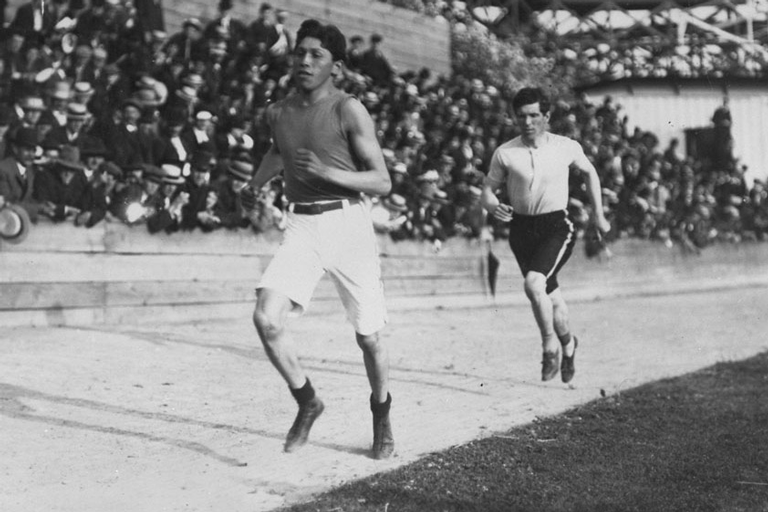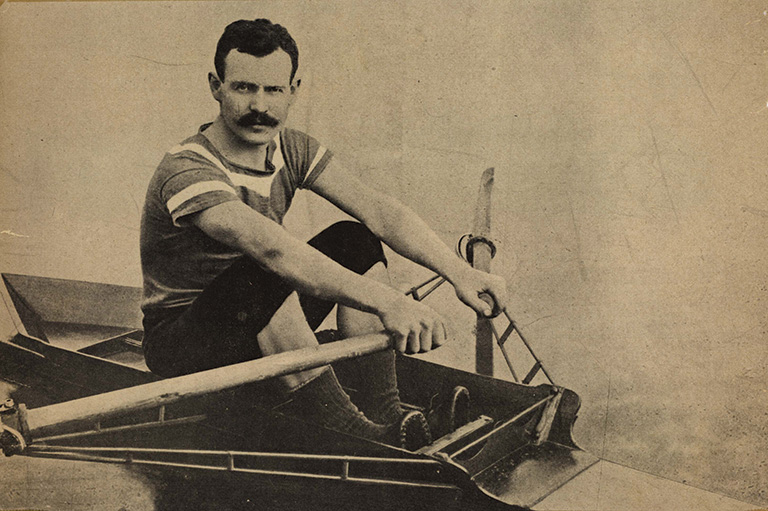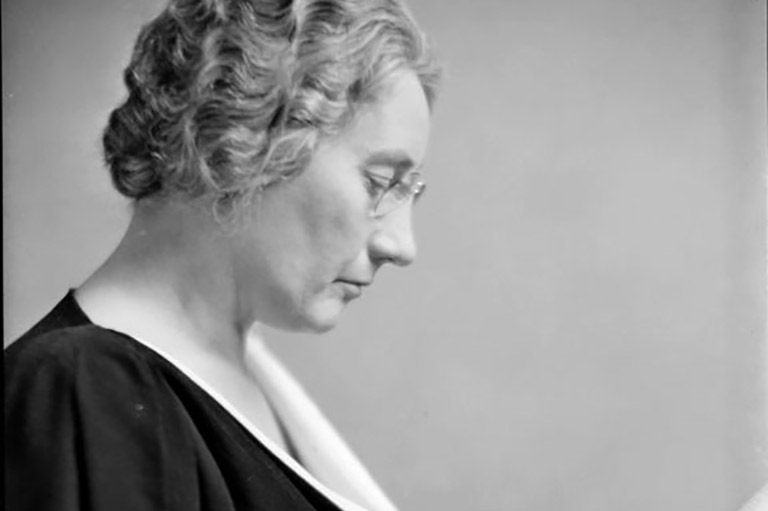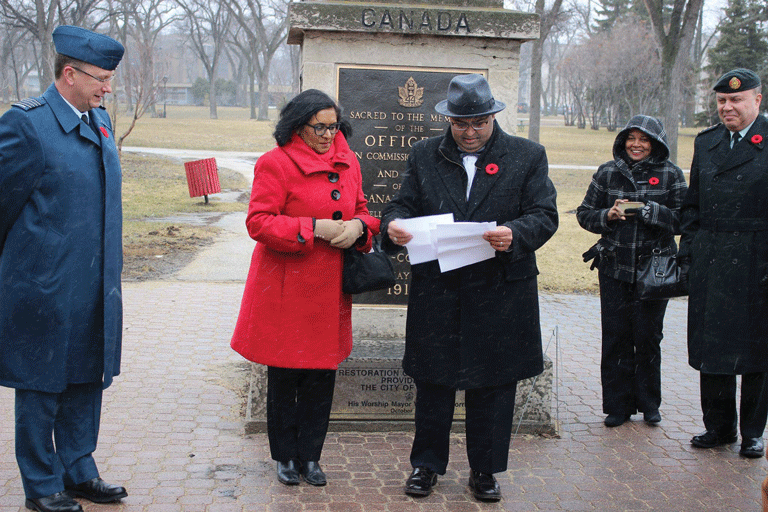Golden Hammers
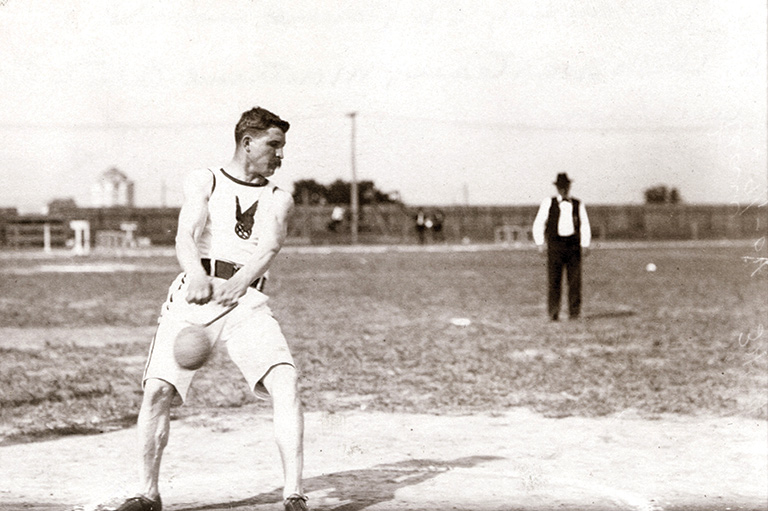
When muscle-bound British Columbians Ethan Katzberg and Camryn Rogers swept gold in the men’s and women’s hammer throw at the Paris Olympics this summer, the twin wins made for a perfect historical bookend to a landmark event that took place 120 years ago: Étienne Desmarteau’s victory in the fifty-six-pound (25.4-kilogram) weight throw at the 1904 Games in St. Louis, Missouri, was the first Olympic gold-medal performance by an individual representing Canada.
Desmarteau, a Montreal policeman, tossed a much heavier object to win his gold: The metal balls flung by Katzberg and Rogers weighed sixteen pounds (7.26 kilograms) and 8.8 pounds (four kilograms), respectively. (The heftier hammer toss was cut from the Games after 1920.)
Remarkably, the titles earned by Desmarteau in 1904 and by Katzberg and Rogers in 2024 are the only three Olympic gold medals Canada has ever won in any of the Summer Games’ four throwing sports: hammer, discus, javelin, and shot put.
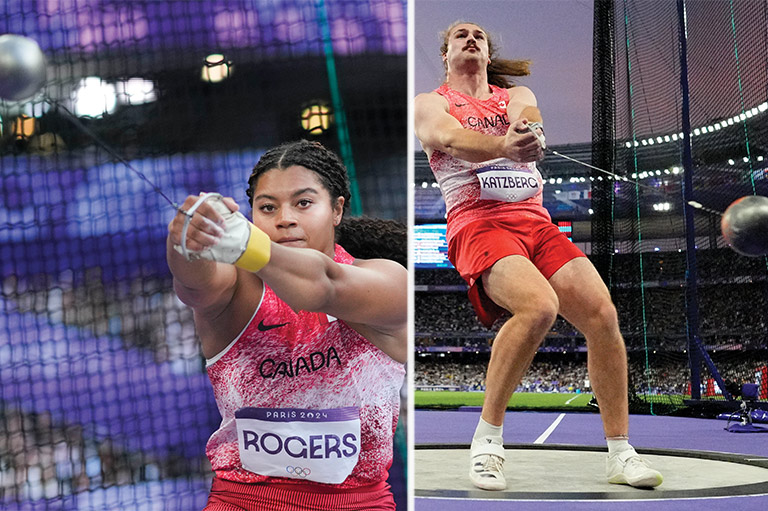
Advertisement
Desmarteau (yes, marteau means hammer in French — his ancestor was a blacksmith) defeated his chief rival at St. Louis, the celebrated American athlete John Flanagan. Desmarteau shocked the sporting world by out-throwing the heavily favoured American by thirty centimetres.
Desmarteau, who lost his policing job when he was refused time off to compete, was hired back after his triumphant return. The Montreal Gazette reported that he “was last night tendered a warm reception by his friends and the members of No. 5 station.” He was celebrated for bringing “honour to the Dominion of Canada and particularly to the Montreal police force.”
It wasn’t long before Desmarteau was in the spotlight again. In January 1905 he was hailed as a hero for his dramatic takedown of a would-be cop killer, Edward Kelly. Kelly had wounded a police detective and fired several bullets at Desmarteau before the Olympic champ chased down, grabbed, and pistol-whipped the suspect into submission.
Sadly, Desmarteau didn’t get to enjoy his fame for long. The powerhouse policeman died, probably of typhoid fever in October 1905 at age thirty-two, barely a year after his moment of glory in St. Louis.
In his hometown of Montreal, a park, a sports facility, and a district are all named in Desmarteau’s honour. Fittingly, the Étienne Desmarteau Centre was the site of many of the basketball games played at the 1976 Montreal Olympics.
With 7 uniquely curated newsletters to choose from, we have something for everyone.
We hope you’ll help us continue to share fascinating stories about Canada’s past by making a donation to Canada’s History Society today.
We highlight our nation’s diverse past by telling stories that illuminate the people, places, and events that unite us as Canadians, and by making those stories accessible to everyone through our free online content.
We are a registered charity that depends on contributions from readers like you to share inspiring and informative stories with students and citizens of all ages — award-winning stories written by Canada’s top historians, authors, journalists, and history enthusiasts.
Any amount helps, or better yet, start a monthly donation today. Your support makes all the difference. Thank you!
Themes associated with this article
Advertisement
Save as much as 40% off the cover price! 4 issues per year as low as $29.95. Available in print and digital. Tariff-exempt!


